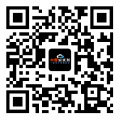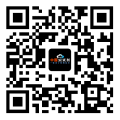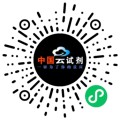詳細說明
Purity
>95%, by SDS-PAGE under reducing conditions and visualized by silver stain.
Endotoxin Level
<1.0 EU per 1 μg of the protein by the LAL method.
Activity
Measured by its ability to co-stimulate IL-2 secretion by mouse T cells in the presence of anti-CD3. The ED 50 for this effect is 0.008-0.05 μg/mL in the presence of a Mouse Anti-polyHistidine Monoclonal Antibody (Catalog # ). Measured by its ability to bind Recombinant Mouse 4?1BB/TNFRSF9/CD137 Fc Chimera (Catalog # ) in a functional ELISA.
Source
Mouse myeloma cell line, NS0-derived
Met 10-His tag GGGSGGGSGGGSIEGR Mouse 4-1BB Ligand
(Arg104-Glu309)
Accession # P41274N-terminus C-terminus Accession #
N-terminal Sequence
AnalysisMet
Predicted Molecular Mass
25.7 kDa
SDS-PAGE
41-44 kDa, reducing conditions
Carrier Free
What does CF mean?
CF stands for Carrier Free (CF). We typically add Bovine Serum Albumin (BSA) as a carrier protein to our recombinant proteins. Adding a carrier protein enhances protein stability, increases shelf-life, and allows the recombinant protein to be stored at a more dilute concentration. The carrier free version does not contain BSA.
What formulation is right for me?
In general, we advise purchasing the recombinant protein with BSA for use in cell or tissue culture, or as an ELISA standard. In contrast, the carrier free protein is recommended for applications, in which the presence of BSA could interfere.
1246-4L/CF |
| 1246-4L |
Formulation Lyophilized from a 0.2 μm filtered solution in PBS. | Formulation Lyophilized from a 0.2 μm filtered solution in PBS with BSA as a carrier protein. | |
Reconstitution Reconstitute at 100 μg/mL in sterile PBS. | Reconstitution Reconstitute at 100 μg/mL in sterile PBS containing at least 0.1% human or bovine serum albumin. | |
Shipping The product is shipped at ambient temperature. Upon receipt, store it immediately at the temperature recommended below. | Shipping The product is shipped at ambient temperature. Upon receipt, store it immediately at the temperature recommended below. | |
Stability & Storage: Use a manual defrost freezer and avoid repeated freeze-thaw cycles.
| Stability & Storage: Use a manual defrost freezer and avoid repeated freeze-thaw cycles.
|
Background: 4-1BB Ligand/TNFSF9
4-1BB Ligand (4-1BBL), also known as CD137L, is a type II transmembrane protein that belongs to the TNF superfamily of molecules and plays an important role in immune response activation (1). The approximately 50 kDa mouse 4-1BB Ligand consists of an 82 aa cytoplasmic domain, a 21 aa transmembrane segment, and a 206 aa extracellular domain (ECD) (2). Within the ECD, mouse 4-1BB Ligand shares 36% and 86% aa sequence identity with human and rat 4-1BB Ligand, respectively. 4-1BB Ligand is expressed by activated B cells, monocytes, macrophages, dendritic cells (DC), T cells, lymphoma and multiple myeloma cells, hematopoietic stem cells, early myeloid progenitors, neurons, and astrocytes (3-9). A 26 kDa soluble form of 4-1BB Ligand can be released from the surface of activated cells and retains bioactivity (10). 4-1BB Ligand binds to 4-1BB/TNFRSF9/CD137 on activated CD4 + and CD8 + T cells, thymocytes, and NK cells as well as on monocytes, neutrophils, DC, and eosinophils. In response to 4-1BB Ligand binding, 4-1BB transduces a co-stimulatory signal that promotes the proliferation, activation, and survival of CD4 + and CD8 + T cells (4, 11, 12). T cell co-stimulation through CD28 is important for the initial T cell expansion, while 4-1BB acts later in the response (12, 13). 4-1BB Ligand function supports the survival and responsiveness of memory T cells during viral infection (13-15). Reverse signaling through
4-1BB Ligand on monocytes induces the production of inflammatory cytokines (5). On macrophages, 4-1BB Ligand associates in cis with TLR4 and enhances inflammatory cytokine production in response to TLR4 ligation (6). Its expression on early myeloid progenitor cells limits the development of dendritic cells, monocytes, and B cells (9).
References:
Wang, C. et al. (2009) Immunol. Rev. 229:192.
Goodwin, R.G. et al. (1993) Eur. J. Immunol. 23:2631.
Reali, C. et al. (2003) J. Neurosci. Res. 74:67.
DeBenedette, M.A. et al. (1997) J. Immunol. 158:551.
Langstein, J. et al. (1998) J. Immunol. 160:2488.
Kang, Y.J. et al. (2007) Nat. Immunol. 8:601.
Baessler, T. et al. (2010) Blood 115:3058.
Gullo, C. et al. (2010) PLoS One 5:e10845.
Lee, S.-W. et al. (2008) Nat. Immunol. 9:917.
Salih, H.R. et al. (2001) J. Immunol. 167:4059.
Wen, T. et al. (2002) J. Immunol. 168:4897.
Cannons, J.L. et al. (2001) J. Immunol. 167:1313.
Bertram, E.M. et al. (2002) J. Immunol. 168:3777.
Bukczynski, J. et al. (2004) Proc. Natl. Acad. Sci. USA 101:1291.
Lin, G.H.Y. et al. (2009) J. Immunol. 182:934.
Entrez Gene IDs:
8744 (Human); 21950 (Mouse); 353218 (Rat)
Alternate Names:
41BB Ligand; 4-1BB Ligand; 4-1BBL; 4-1BB-L; CD137L; homolog of mouse 4-1BB-L; receptor 4-1BB ligand; TNFSF9; tumor necrosis factor (ligand) superfamily, member 9; tumor necrosis factor ligand superfamily member 9










 粵公網安備44196802000105號
粵公網安備44196802000105號